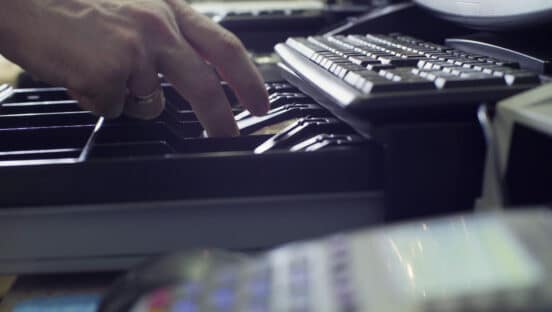Think of Computer Vision Technology (CVT) as an all-seeing, all-knowing extra set of eyes—an omniscient, reliable narrator who improves the human experience. For these reasons, CVT is helping revolutionize the quick-service drive-thru.
Fingermark, a leading New Zealand–based AI data solutions provider, employs CVT in its machine-learning Eyecue software as part of its digital suite. Far beyond just tracking vehicles and bottlenecks, live video feeds capture human-to-vehicle interactions right down to first greeting, or when an arm extends out a car window to pay. Actionable insights are then sent directly to staff via in-house dashboards based on performance analytics.
“We focus on the drive-thru because we do believe it’s the most complex piece of road in the world,” says Simon Foley, Fingermark product strategist. “Solving problems there has been our major focus and we’ve made great progress.”
Thanks to Eyecue, managers can review reels and steer strategy from an AI-generated level—detecting rushes, crunches, or anomalies by time, date, or even season to solve presumed outcomes. Smart allocation of resources—including granular details such as redirecting staff to a different station—begets predictability. These insights can be hugely impactful to drive-thru efficiency, particularly during a labor shortage.
The technology does away with guesswork involved with the manual surveying of physical sites, which captures footage only in one spot, or sporadically, due to poor quality or setup. CVT’s effectiveness also far exceeds sourcing information from site-visit audits alone, which happen far too infrequently.
“We’ve seen operators fly drones above the restaurant to maybe capture one hour of footage and try to see what is going on in a complicated draft. Because we don’t just have some analog timing solution, we actually have the ability to replay the footage and to offer suggestions and coaching to improve operations,” says Foley, who also touts CVT as an infrastructure assessment tool. Major brands routinely approach Fingermark when they are in need of securing and optimizing zoning to rule out drive-thru blockages.
Rapid evolution of the drive thru has created complex traffic for staff to manage—mobile-only lanes, VIP speed lanes, two-lane mergers, kiosks, wait-bay areas—as well as delivery aggregators like UberEats that need to be prioritized against customers in the drive thru. All the while brands are struggling to ensure order accuracy and customer experience are not compromised.
Indeed, Fingermark boasts a customer journey accuracy track record of 98 percent, a sky-high number when compared to the industry standard of the mid-to-low 80 percentile. “Over time, if we put Eyecue into a store, we’ll always see a gradual improvement in the speed of service at that store,” Foley says. “Part of that comes from time for the system to be bedded in. The staff start to gain trust in the system, and then they can use it more.”
The ultimate goal for most operators is to use the technology for positive reinforcement. “A really key part of the computer vision is to get the staff involved in wanting to use it and being engaged and happier in their roles as well,” Foley says. “Not only can staff use our tools in real-time, they can drive themselves to perform because they know they’re being fairly represented in terms of hitting KPIs.”
For more on CVT and its effectiveness in the drive-thru space, visit the Fingermark website.
By Jocelyn Winn













